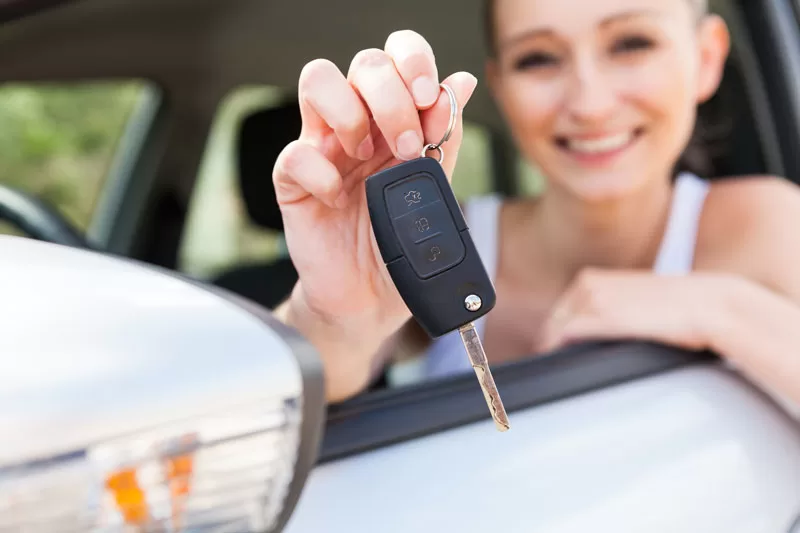
When your teen reaches 15 you can expect the question of, “When can I get my permit?” Of course, to answer this, you might need to deal with the DMV to get all the details, right? No need, because here’s a quick step-by-step guide to getting a Florida driver’s license with all the answers, requirements, and restrictions for teen drivers in Florida.
Step 1 – Complete the Florida Drug and Alcohol Course
The Florida Drug and Alcohol course goes by a lot of different names, but essentially it’s just the required “classroom” portion needed to apply for the permit at the DMV. It is also commonly referred to as the TLSAE (Traffic Law and Substance Abuse Education). The course takes about four hours to complete and can be done online, or even in an app.
Step 2 – Apply for the Driving Permit
After completing the Drug and Alcohol course, your teen is ready to apply for their permit. Start by printing the application and filling it out before arriving at the DMV. This will shorten your time spent in there and make things go more smoothly.
The application you will need is the Parent Consent Form (Under 18 – Learner’s License).
Here is everything you and your teen will need to bring to the DMV office.
- Completed Parent Consent Form (Under 18 – Learner’s License)
- Proof of your teen’s identity (e.g. a certified U.S. birth certificate)
- Your teen’s social security card
- Proof that the TLSAE was completed
- Proof of your Florida residential address
Step 3 – Take the Permit Test
After all the documents are in order, your teen can now take the standard DMV written test. There are resources available to help with studying and practice exams to use prior to the real thing. It is possible to get permit practice tests included with the Drug and Alcohol course online.
After passing (because of course they will, it’s your kid!) your teen will take a simple hearing and vision test. Once confirmed that they can, in fact, see and hear, your teen will be issued a Florida Driver’s Permit.
Step 4 – Follow the Permit Restrictions
Your teen is now able to drive legally under the supervision of a licensed driver who is at least 21 years old. He or she can even drive you home from the DMV if you’re feeling brave.
Make note of the time restrictions that come with the permit. For the first three months, they can only drive during daylight hours. After this period, they can drive until 10 PM.
Step 5 – Log the Required Hours
Whether your teen is attending driving school or recording their practice driving time with you in the passenger seat, they have to complete 50 hours of driving time behind the wheel. 10 of those hours must be at night.
Step 6 – Pass the Behind-the-Wheel Test
When your teen has held the permit for one year, is at least 16, and has had no tickets or accidents in the permit period, they are ready to get their Provisional/Intermediate License.
At the DMV, your teen will need to bring:
- Their learner’s permit
- Certification that they completed the required behind-the-wheel hours
They will then be allowed to take a driving test. Your teen will want to make sure they are comfortable with the vehicle he or she is using. Some states will test that they know how to turn the high/low beams and defroster on, so make sure they are prepared to demonstrate even the little things. Additionally, it’s a good idea to practice parallel parking before the day of the test
Did they pass? Wonderful!
Step 7 – Follow the License Restrictions
Your teen is now a licensed driver and can drive to school or work independently.
16-year-olds can drive unsupervised between the hours of 6 AM and 11 PM.
17-year-olds can drive unsupervised between the hours of 5 AM and 1 AM.
If they’re driving supervised by another licensed driver who is over 21, they can drive at any time of day or night. Once your teen hits 18, they can go to the DMV and get their Unrestricted Driver License, which takes all time and supervision constraints off of them. They now have equal driving privileges to yours!
Leave a Reply